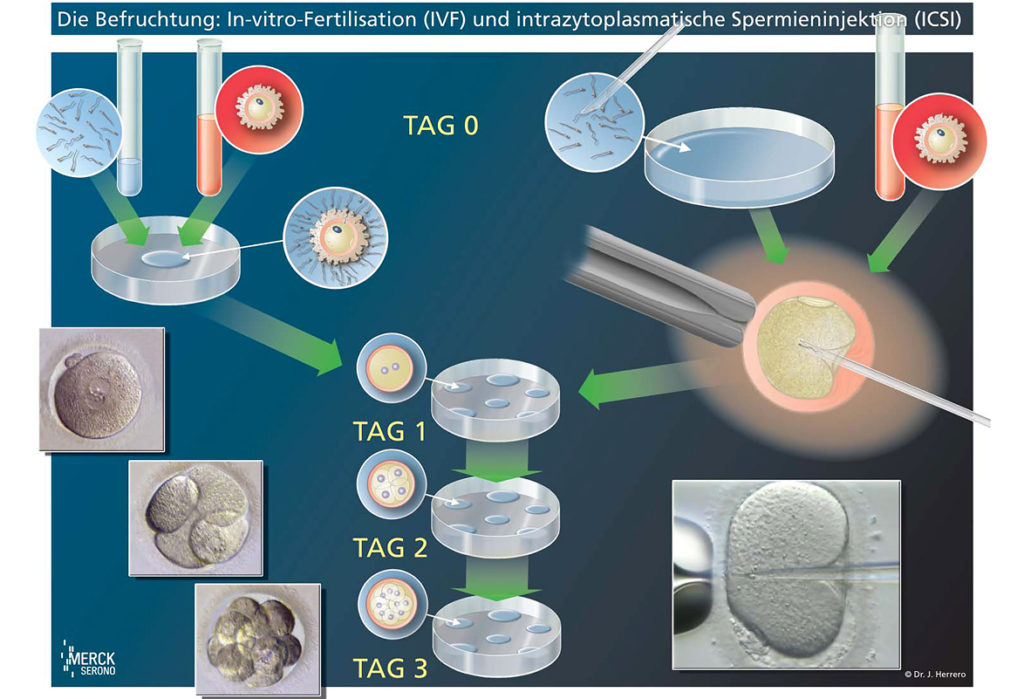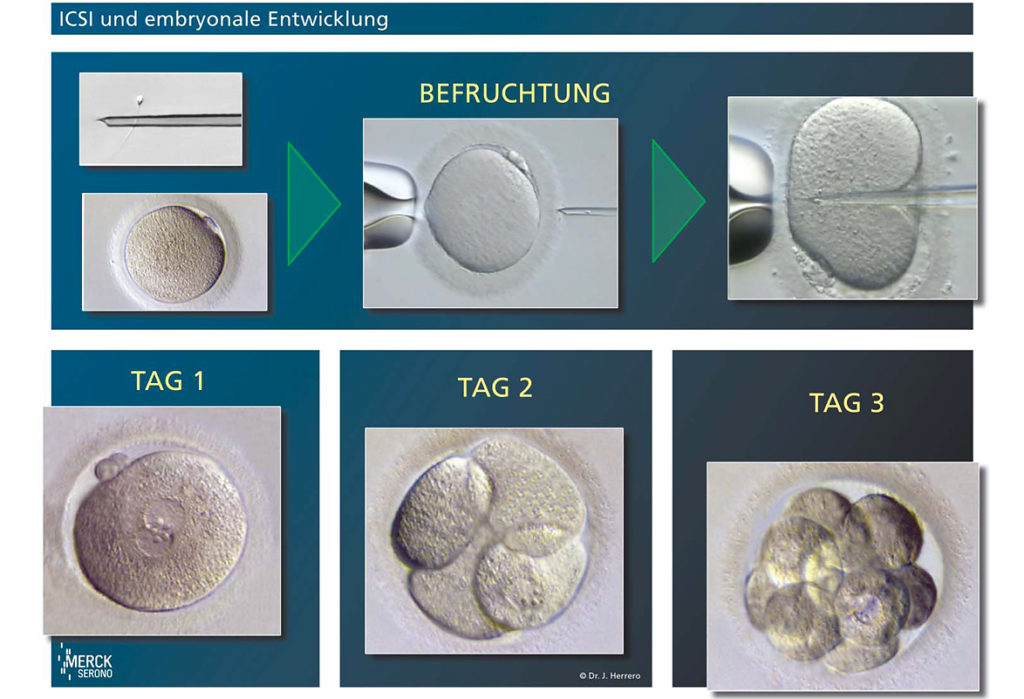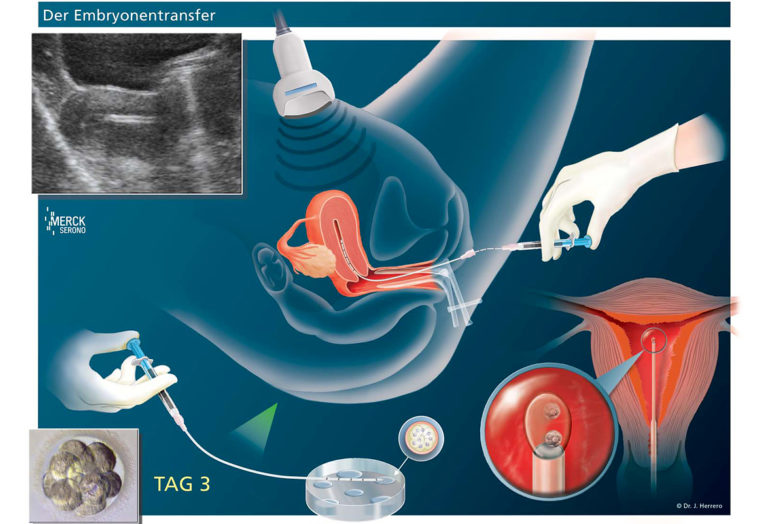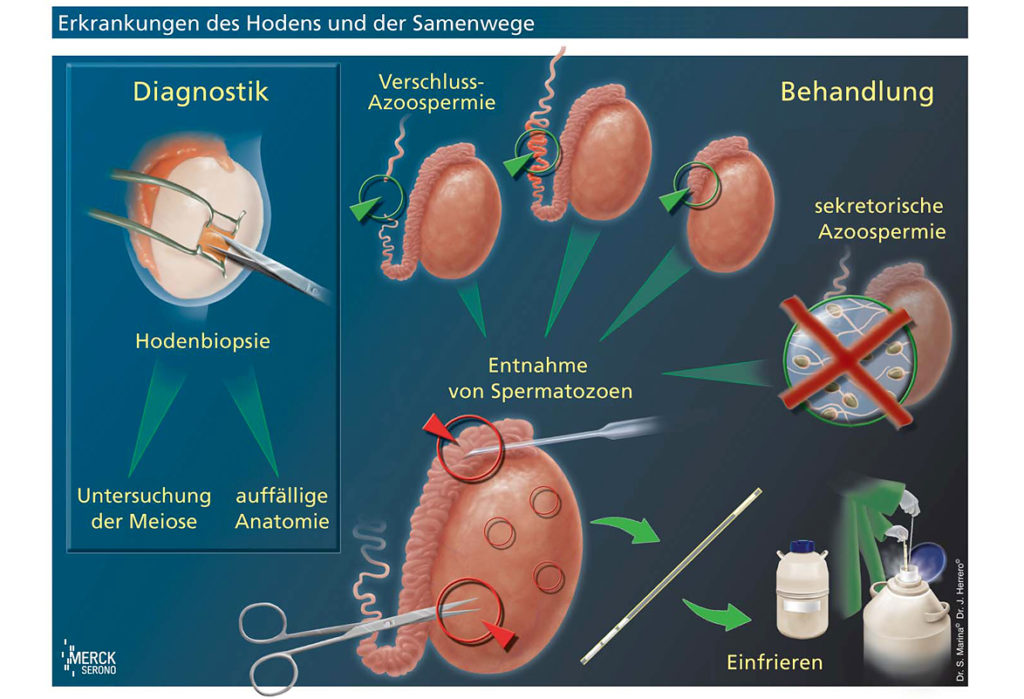Treatment
We do all of the common fertility methods in our office. From optimizing the natural cycle, to assisted fertility till the IVF – in vitro fertility.
Natural methods
- Optimizing of the hormone, thyroid, PCOS, luteum and other hormone issues
- Optimizing of the metabolism with nutrions and metformin therapy
- Optimizing of a possibly mineral and vitamin inefficient.
Reproductive medicine methods:
- Hormone stimulation
- Insemination in the spontan cycle or stimulate cycle
- follicular puncture in the natural cycle
- in-vitro-fertilisation IVF
- intracytoplasmatische sperminjection ICSI
- Blastozystculture Freezing of the ovum (kryoconservation), testicular tissue and sperms
- Social Freezing
- Assisted Hatching
- EmbryoGlue®
Hormone stimulation
We use the hormone stimulation when the ovum growing is not good enough. This therapy starts usually between the third and fifth day of the period. From the tenth cycles day we will check the growing of the ovum through the ultrasound and blood testing. The dose of the hormones will be customized and as soon as the follicle is big enough, we trigger the ovulation.
Insemination

We do an insemination when the number and the mobility of the sperms is limited. At this Intervention we take the sperm of the men and prepare it in our laboratory, to inject it through a catheter right into the uterine cavity. This intervention is very simple and painless. The chance to become pregnant is around 10 %.
IVF – In vitro Fertilisation

If there is a functional issue with the oviduct, the IVF therapy is a good way to go. In this case we will take an ovum after hormone stimulation and put it in our laboratory together with the sperm of the men, under the microscope. The ovum will be fertilized by the sperm without any help. Usually two embryos will be transferred into the ovarium again. The whole therapy will take around four weeks. The chance to become pregnant highly dements on the age of the women.
ICSI – med. intracytoplasmic sperm injection

Quelle: MERCK 
Quelle: MERCK
If there is a functional issue with the sperms or we could not find any reason for the childlessness we will do an ICSI. This Intervention is mostly just like IVF. But under the microscope will the sperms be injected directly into the ovarium. This will also take around four weeks. The chance to become pregnant highly dements on the quality of the sperms and the age of the patients.
Blastocyst
In some cases (after unsuccessful IVF/ICSI) it is us useful to leave the embryo in the lab for around five days to evolve more. This gives us a better chance of a pregnancy.
Kryoconversation
In Germany it is allowed to transfer maximal three embryos per cycles. This is to protect the women from multiple pregnancies. The rest of the ovum will be conservert and melted later to be used.
Assisted Hatching
That is a method to increase the chance to become pregnant. It helps the implantation into the endometrium. The case of the embryo (zona pellucid) will be thinned a bit so that the embryo has it easier to hatch. The Assisted Hatching will be used most likely with the frozen embryos (kryocycle).
EmbryoGlue
That is a glue for helping the embryo to stick in the uterine wall.
Testicular biopsy

A testicular biopsy is necessary, if there are no sperms to be found. Therefore we will remove tissue form the testicles and take the sperms out of them. With this treatment 75% of the sperm can be found. This treatment will be combine with the ICSI therapy. This little surgery will be taken place at the G2 Urology, our cooperation partner.
